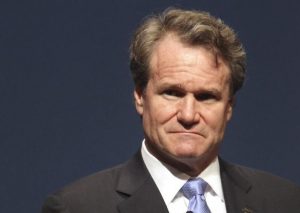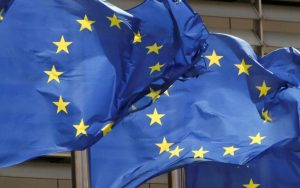The eurozone economy grew less rapidly in the three months through June than previously estimated, making it more difficult for the European Central Bank to secure a soft landing as it seeks to tame inflation.
The European Union’s statistics agency Friday said the combined gross domestic product of the eurozone’s 20 members grew by just 0.2% in the second quarter from the first, having previously estimated that output increased by 0.3%.
That marked a slowdown from the first quarter, and a much weaker performance than that recorded by the U.S. and U.K. economies over the same period. The figures also showed that investment fell sharply during the quarter, while consumer spending also declined, both indications that high interest rates were cooling demand. Growth was mainly driven by exports and government spending.
Recently published surveys and data point to continued weakness in the third quarter, and a growing risk that Germany, the currency area’s largest economy, is sliding into recession after contraction in the three months through June.
Eurostat’s downgrade to its growth estimate was partly driven by weaker growth in France, the eurozone’s second-largest member. But it was one of its smallest countries—Ireland—that was largely responsible for the change.
Previously available figures had pointed to a strong pickup in the Irish economy during the second quarter. But new figures published Thursday instead pointed to a large contraction.
Over recent years, Ireland has been a regular source of revisions and surprises in eurozone economic data. It is a base for many large U.S. pharmaceutical companies, and was the second-fastest growing economy in the world during 2022, when demand for drugs soared during the Covid-19 pandemic.
But it contracted sharply last year as demand for drugs eased. While growth was expected to resume this year, the second-quarter contraction was driven by domestic weakness as well as a small decline in the activities of U.S. businesses.
Weakening economic growth poses a challenge for the ECB, which has indicated that it will move cautiously in following its June rate cut, the first since 2019. Investors expect policy makers to lower the key rate again when they meet next week, but it is unclear how quickly further cuts will follow.
Some policy makers want to move slowly, arguing that the eurozone economy is not in urgent need of support, and that inflation can be tamed without a fall in output or employment, rather than what is known as a hard landing.
“While risks to growth have increased, a soft landing still looks more likely than a recession,” said Isabel Schnabel, a member of the ECB’s executive board, in a recent speech.
However, other policymakers see a greater risk that the eurozone economy will be pushed into contraction or stagnate if the ECB does not lower borrowing costs at a more rapid pace. Some economists expect that view to become more widely held after next week’s expected cut.
“On the back of the weaker growth outlook, we now believe that the ECB will step up the pace of easing,” wrote ING Bank’s Peter Vanden Houte in a note to clients.
Write to Paul Hannon at paul.hannon@wsj.com







